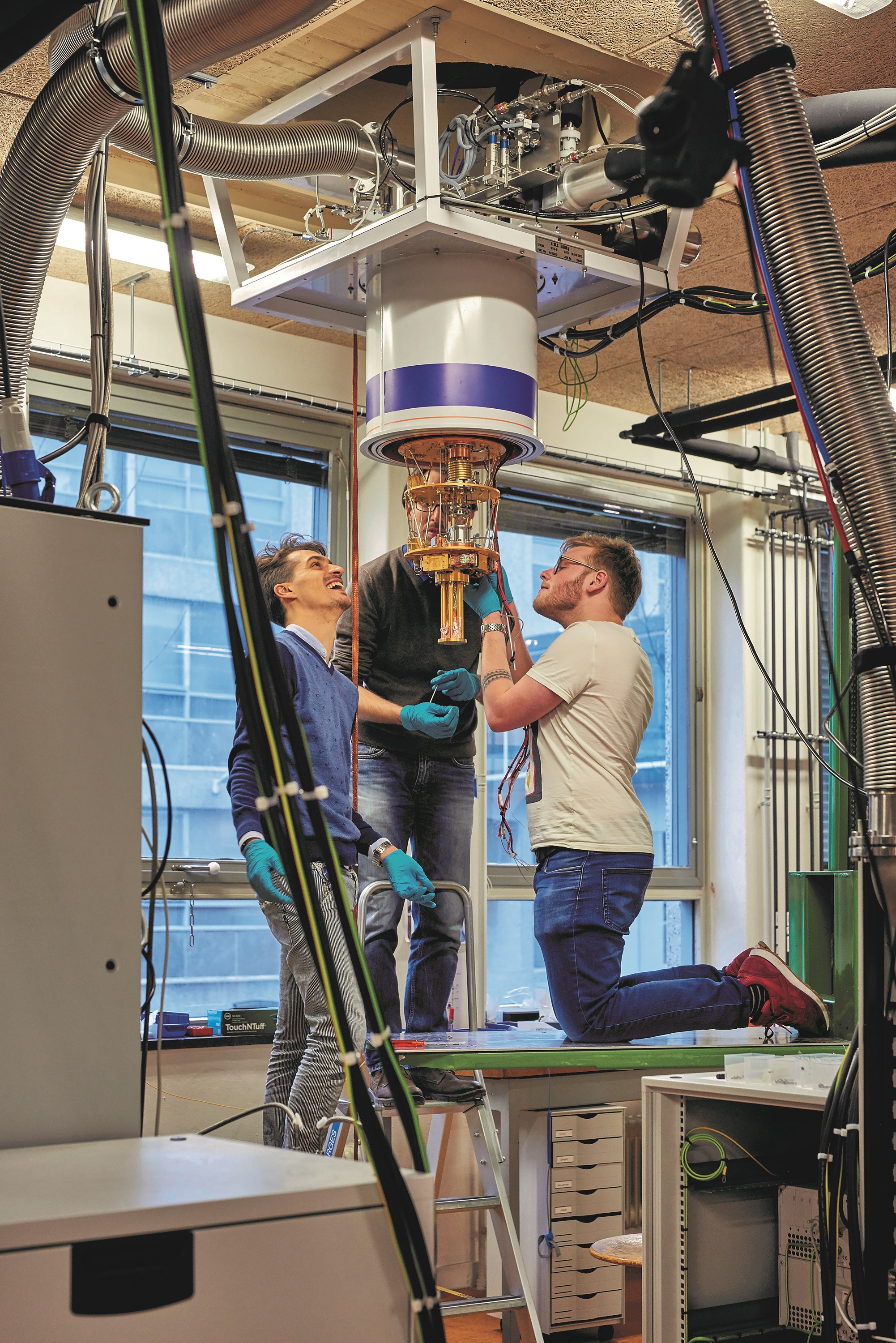From theory to reality
To make a quantum computer we need many tangible components, from quantum chips, control electronics and refrigerators to quantum algorithms and software.
Building the future
The laws of quantum mechanics were conceived well over a century ago, and since then they have found their way to technological applications such as transistors and lasers. But only in the past decades have we had the technological know-how to accurately create small, fragile quantum systems for computing. These systems – the quantum brain cells of the quantum computer – exist in all sorts and flavors: some are over a thousand times smaller than a hair, whereas others can be a few hairs thick. Some require giant refrigerators which are hoisted from the ceiling to keep them sufficiently cool, where others can be operated near room temperature. And they all need a plethora of wires and electronics, often stacked in man-high racks.
Scientists and engineers from many different disciplines – from physics to computer science and electrical engineering to design engineering – cooperate to create the many components of a quantum computer. Some may work on qubits and their connectivity, some on correcting errors that accumulate in the quantum computer, where others work on making software or creating user-friendly interfaces. But when can you say you have succeeded in building a quantum computer, and what does it take to build one? In this chapter, we highlight the building blocks of a quantum computer – from quantum chips to software stacks.

